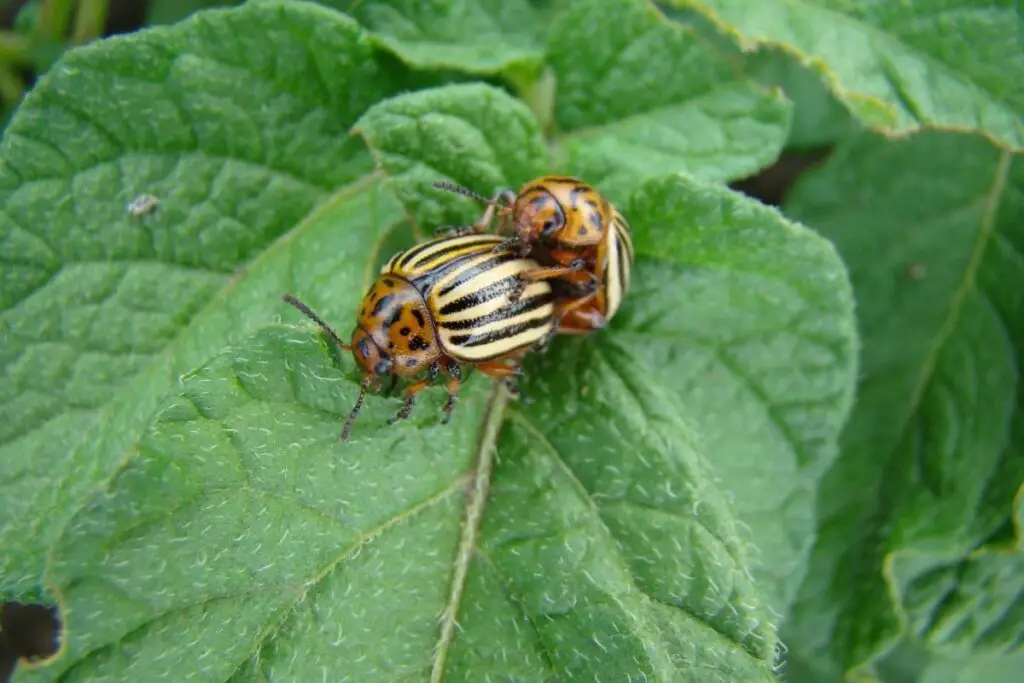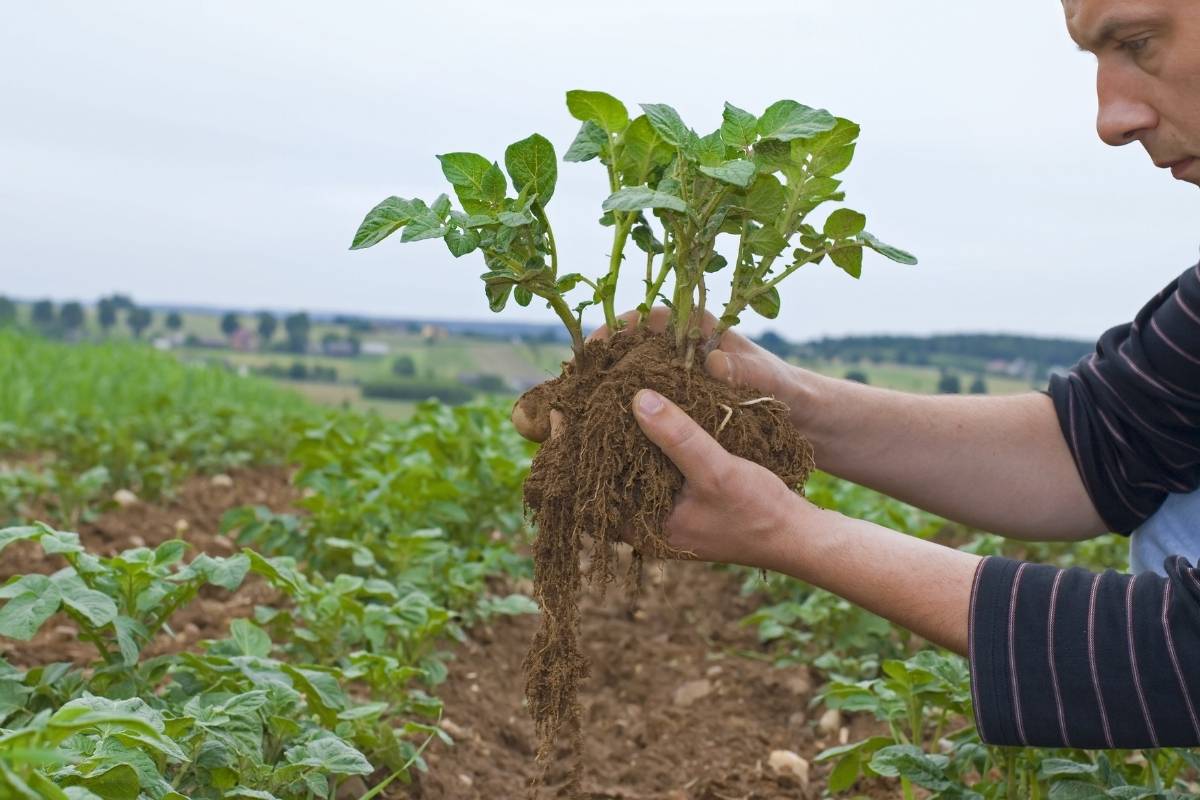Potatoes are one of the most commonly used vegetables and feature in a wide variety of meals and recipes.
At some point many people and gardeners have considered growing a row or two of this versatile crop, so how can you plant potatoes?
Potatoes can be planted in the ground, a raised garden bed or even inside.
It is best to start potatoes indoors (so they get off to a good start) and plant them outside once it’s warm enough. Even after sprouting you can contain them in containers like milk cartons or buckets until weather permits planting out.
Potatoes can be easily started indoors.
Buy the seed potatoes at a garden store or hardware store that sell them as tubers which are potato sections with stems still attached.
Avoid any that show signs of greening (sprouting) as they may rot in storage. They should have eyes, places where small shoots will eventually emerge.
Potatoes are very easy to grow from seed. Just plant the “eyes” with the buds facing up and cover them with soil. .
Take a sharp knife and cut off pieces of the potatoes that have eyes (the beginning of a new sprouting potato).
Plant one or two in each cell depending on the size of pot you are using. Water them in well and place the container somewhere where they can get lots of light.
You will see the sprouts emerge within a few days and will need to keep the soil moist until they grow large enough to handle the outdoor conditions.
Potatoes usually want loose, rich soil but I have had decent results with straw or leaves as mulch.
[amazon box=”B08JZHN4VT” template=”horizontal” title=”Simply Seed Russet. Naturally Grown Seed Potatoes” description=” “]
Choose a seed potato that suits your needs
When you are ready to start planting outside, make sure you have the right type for your climate.
There are white and yellow varieties with white being better for cooler climates or coastal areas like Vancouver Island.
There are many different varieties of seed potatoes that have been developed for a wide range of environments and your local garden center should be able to provide you with a list of varieties that are suitable for your climate.
When do you plant potatoes?
Potatoes need warm soil to produce a good crop.
Wait until the soil has warmed up and you are sure there will be no more frost before planting.
You can plant potatoes in the ground as early as possible in spring, even before the last frost if they are mulched well (I have done this successfully).
If you want to avoid any chance of frost damage, time your planting so that some of them have produced tubers by mid June.
It is also possible to plant potatoes in late summer so that you can have new potatoes at Christmas.
Can you grow potatoes from store bought potatoes?
Yes! You can do it but I have found that you don’t get the same kind of results.
If you have some store bought potatoes that have started to sprout then you can plant them into the ground and see how they perform, you may get some good results if you are lucky.

How deep to plant your potatoes?
About 12-14 inches deep is good for most climates.
Plant them deeper if the soil temperatures aren’t staying warm after you plant them (in early spring).
It is possible to just push them into the soil without covering them over with more soil, but this might lead to exposure to air which will result in greening and lower yields.
Watch out for pests
Look for potato bugs (small greenish/yellow/brown worms) that love to eat young potato plants so use some sort of insecticide if you notice these pests making an appearance.
If aphids attack, try spraying them with water from your garden hose.
Avoid strong chemical pesticides unless absolutely necessary since many are toxic to humans as well as beneficial insects such as bees.
Watch out for Colorado Potato Beetles which like to attack potato plants early in their development – they are easy to spot because they look like ladybugs but have real black spots on their wing covers.
Avoid using chemical pesticides if possible instead saving beneficial ladybugs (they feed on many pests) by releasing some into your garden when you see Colorado Potato Beetles around or just squish them when you find them .
These beetles also love eggplant so do not plant eggplants near potatoes unless you want to invite problems.

Feeding Potatoes
Space plants about 12 inches apart from each other and water them daily until it is time to harvest (anywhere from 3 weeks to 6 weeks later).
Potatoes need lots of sun and warmth so there is little sense growing them in shady areas.
Potatoes need high amounts of sunlight, lots of water and loose soil to grow properly so if you have heavy clay type soil it may be worth it to loosen it with compost or other organic matter before planting out.
Also make sure you have plenty of space when planting out potatoes – they can grow to be very large and need lots of room for leaves, flowers and tubers .
Try the mammoth varieties if you want really big potatoes though your garden will look full with these monsters in it!
Once potatoes are planted out you can “hill” them up to make sure they don’t rot – this means adding some soil around the base of the plants once flower buds appear.
Add small amounts at a time (don’t cover more than one third of the plant’s stem) to a depth of an inch or two and you will be rewarded with potatoes that store well.
How do you know when your potatoes are ready to harvest?
Potatoes are normally ready to be harvested when the foliage has started to die back.
Harvesting your potato crop
During harvest time, keep your eyes open for any pest problems since the plants don’t have leaves to protect them anymore.
Potatoes will be ready to harvest when you start to see the foliage dying back.
Dig carefully the plant and gradually work the tubers up.
Be careful that you don’t damage the potatoes as you dig and, if necessary, get down and use your hands to harvest the crop.
Planting potatoes as a fall crop
Some people like to plant some potatoes in their garden when the weather starts getting cooler.
The idea here is that you can start eating them before it gets cold out since they take longer to mature once planted as opposed to being grown from seed directly into their permanent location outdoors.
There are many varieties of potato plants that grow well during this time of year such as Kennebec and Yukon Gold and you can also check with your local garden supplier for regional varieties that can be grown later in the year.
Growing potatoes in the winter
If you want to keep your potatoes growing into the winter, save some of the potato plants in pots and place them somewhere warm (like a spare bathroom or basement).
Give them as much daylight as you can – a conservatory or windowsill can be good spots.
Don’t overwater them and avoid letting the plants get cold.
A good way of growing potatoes and other crops in winter is to use an artificial growing lamp that will provide your plants with all of the light and warmth that they require.
Final Words
Planting potatoes is a fairly simple process, but there are some important steps to make sure you do it right.
With some simple steps and the right type of seed potatoes you will find that this is a reliable and easy crop to grow that needs no special knowledge or experience.
You can grow them in the ground or in pots, buckets and anything else that can hold about 12 inches of earth.










